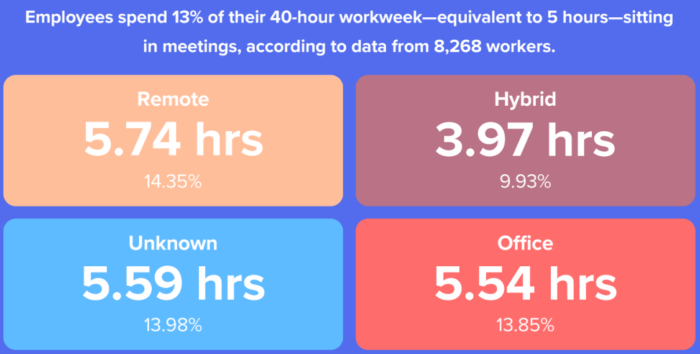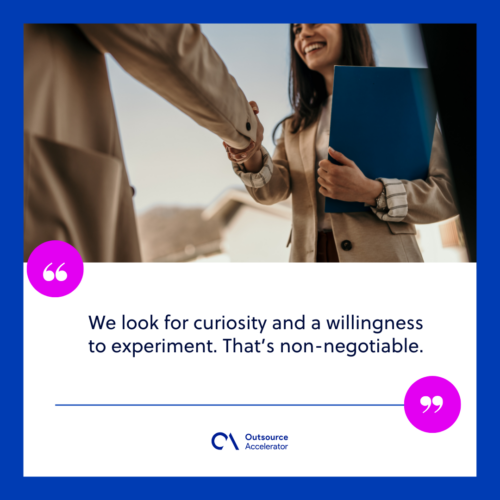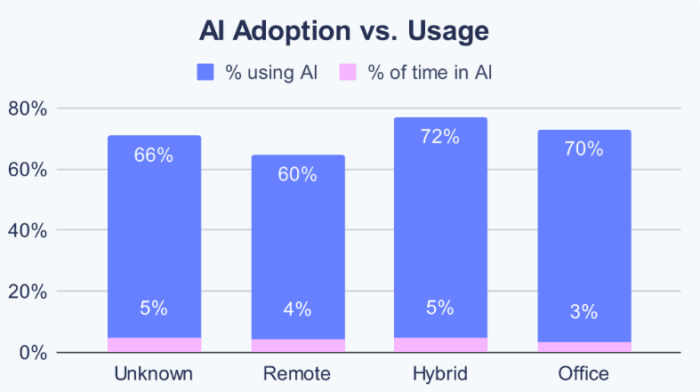Productivity tips for technical leaders: How to lead high-performing tech teams

The role of a technical leader has never been more complex—or more critical. You’re expected to balance ambitious roadmaps, distributed teams, and emerging AI tools, all while ensuring that your engineers don’t burn out.
Old-school productivity metrics like hours logged or tickets closed don’t cut it anymore. They fail to capture what really matters: whether your team is creating impact, innovating responsibly, and sustaining momentum.
Tired of the constant scramble? Technical leaders need more than just productivity hacks. They need a system that cuts through the chaos to protect deep work, supercharge output, and empower teams to move at lightning speed without crashing.
The latest Hubstaff Technical Leader’s Productivity Playbook highlights exactly how modern engineering teams are achieving this balance. Let’s dive into the strategies that transform productivity from a buzzword into a leadership superpower.
Why technical leaders need smarter productivity tips
For years, productivity has been measured in numbers: tickets closed, commits pushed, hours tracked.
But as Hubstaff points out, this approach confuses motion with progress. A team can look busy without delivering meaningful outcomes, and chasing activity for its own sake often leads to exhaustion and churn.
Today, productivity for technical leaders is about impact, not activity. It’s about creating systems where visibility doesn’t come at the cost of focus, where automation eliminates busywork, and where sustainability ensures teams can perform at a high level without crashing.
In short, technical leaders need productivity tips that scale both performance and wellbeing.
6 essential productivity tips for technical leaders
Here are six essential productivity tips that every technical leader needs to drive high-performing, focused, and innovative teams:
1. Improve visibility without micromanagement
Technical leaders need visibility to guide decisions, but constant status checks and meetings only disrupt flow. In the Workstyle Revolution, Hubstaff reports that many employees, including technical roles, spend 13% of their 40-hour workweek (equivalent to 5 hours) in meetings—time that could otherwise go into deep work.

Instead of hovering, adopt passive visibility systems. For example:
- Set team-wide “deep work windows” where Slack notifications are silenced.
- Use asynchronous updates and automated summaries to keep alignment without adding meetings.
- Monitor collaboration tool usage patterns to understand how communication affects output.
This approach turns visibility into a strategic advantage. Your team keeps its focus, you stay informed, and no one feels micromanaged.
2. Use data to drive smarter decisions
One of the best productivity tips for any technical leader is to rethink the signals you rely on. Activity metrics alone don’t show you what’s slowing your team down. Hubstaff suggests tracking deeper indicators like:
- Context switching: Frequent toggling between tasks or tools is often a sign of unclear priorities.
- Task churn: How often tasks get abandoned, restarted, or stalled.
- Flow time: How much of your team’s schedule is spent on deep work versus distractions.
The payoff? Data-backed clarity. When you link time investment to outcomes like delivery quality or customer impact, you make smarter decisions about priorities and resourcing.
3. Automate routine workflows
Every technical leader has seen senior engineers waste hours copying updates across Jira, Slack, and Notion. That kind of manual overhead is death by a thousand cuts.
Hubstaff’s playbook emphasizes that automation isn’t just about moving faster, but about freeing up energy for high-value work.
High-leverage automation moves include:
- Auto-generating sprint retros, weekly summaries, and stakeholder reports.
- Tagging time automatically across development phases (research, QA, bug fixing).
- Syncing tagged data with project management tools to spotlight blockers without manual digging.
The more routine tasks you automate, the more your engineers can focus on solving real problems—not reporting on them.
4. Build a culture of experimentation
Great technical leaders don’t just manage—they create cultures where curiosity and experimentation thrive. Hubstaff highlights how Deel cut a two-week immigration workflow down to five minutes by letting engineers test AI solutions.
Practical ways to promote experimentation:
- Make curiosity and adaptability key hiring criteria, not just technical skill.
- Set up “innovation sprints” where teams get time to test new tools or workflows.
- Track outcomes of experiments with metrics like time saved or error reduction.
As Jared Brown, CEO of Hubstaff, puts it: “We look for curiosity and a willingness to experiment. That’s non-negotiable.” When you empower your team to try new things, you unlock breakthroughs that scripted processes never deliver.

5. Set guardrails for responsible innovation
Experimentation is vital, but speed without responsibility is a recipe for risk. Technical leaders must establish guardrails to ensure innovation doesn’t expose security or compliance gaps.
At Hubstaff, for instance, engineers are required to disable model training when using AI tools with proprietary code. This safeguard allows experimentation without compromising intellectual property.
As a technical leader, you can:
- Document clear policies for AI and tool usage.
- Automate audits to flag risky behaviors or policy deviations.
- Create one-page playbooks that make compliance simple and actionable.
Guardrails aren’t about slowing down—they build the trust and safety needed to move faster with confidence.
6. Focus on sustainable productivity
One of the most overlooked productivity tips for technical leaders is to design for sustainability. Many teams fall into feast-or-famine cycles, sprinting hard and then collapsing under the weight of burnout.
Hubstaff’s data shows tech teams already log more weekly focus time (19.7 hours) than other industries, yet they also face more interruptions (8.7 vs. 7 weekly). This fragmentation acts as a hidden tax on productivity.
How to build sustainable systems:
- Use real-time productivity data to monitor signs of burnout, like reduced focus sessions or increased after-hours Slack usage.
- Reserve 20–25% of sprint capacity for unexpected tasks or technical debt.
- Normalize recovery periods and encourage PTO when workloads remain elevated.
- Forecast sprint capacity using historical productivity data, not guesswork.
Sustainable velocity beats sprint-by-sprint heroics every time.
The future of productivity for technical leaders
Looking ahead, two forces will shape how productivity evolves for technical leaders:
- AI adoption: Of the professionals that already use AI, most engineers only spend 5–7% of their time on AI tools. The gap between perception (“AI makes me faster”) and reality (performance can lag on complex tasks) highlights the need for better measurement and smarter integration.
- Distributed work: As hybrid and remote models become standard, asynchronous systems and outcome-focused leadership will be essential. Meetings and micromanagement won’t scale—clarity and alignment will.
The technical leader of the future will be judged not by how many hours their team logs but by how consistently they deliver meaningful outcomes without burning out.

Applying productivity tips to lead better tech teams
In the end, great technical leadership isn’t about cramming in more hours or buying more tools—it’s about designing smarter systems.
The six productivity tips outlined here—visibility, data-driven decisions, automation, experimentation, responsible guardrails, and sustainable velocity—are the blueprint for leading high-performing engineering teams.
Hubstaff helps technical leaders put these principles into practice by:
- Surfacing deep work patterns
- Automating routine reporting
- Enabling sustainable delivery without micromanagement
It’s not about time tracking for its own sake, but about empowering leaders to align focus, protect their teams, and scale with confidence.
If you’re ready to rethink productivity and build the kind of team that consistently delivers impact, it’s time to explore how Hubstaff can support your next leap forward.







 Independent
Independent




